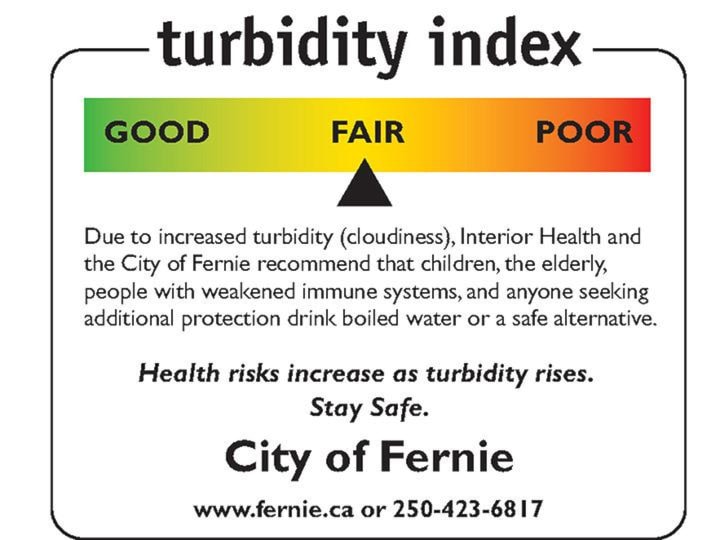Since Fernie’s inception in the early 1900’s, the city has drawn its water from Fairy Creek. Because this is an open water source, the city uses a turbidity index to inform its citizens and visitors on the quality of the water. According to the City of Fernie’s Director of Operational Services, Dave Cockwell, turbidity is the cloudiness or haziness in the water, which is measured through a turbidity meter. The results are online and are constantly being measured.
The catchment is responsible for directing water from Fairy Creek to the city. “Essentially this catchment is a concrete cover constructed over the artesian spring, separating the groundwater from the surface water that comes from watershed,” he said. “The groundwater source is separated from the surface source by the catchment. In spring, when the surface source is running high with snow melt, there is some crossover between the two sources and of course the surface source can be very dirty at times. This crossover can affect the turbidity of the drinking water. This crossover happens mainly in spring, but it can be affected during very high rainfall events as well.”
Because of the water source separation, the water claimed from Fairy Creek only needs basic treating, according to Cockwell.
“Fairy Creek is essentially untreated in terms of filters. We add chlorine to disinfect the water, ensuring that there are no harmful bacteria in the drinking water,” he said.
Water quality is measured in NTU or Nephelometric Turbidity Units. According to Cockwell, there are three ranges that NTU measurements can categorize the water at. The first category, “good” is what Fernie’s taps pump out for the majority of the year.
“Zero to one NTU, the water is considered good. For three quarters of the year we run around .5 NTU,” he said.
When the water condition is considered “fair” by the city, it means that water conditions have exceeded one NTU and entered the one to five NTU thresholds.
“In spring conditions, we are seeing turbidity around .8 to 1.5 depending on the nature of the runoff and storms this time of year,” he said. “It is difficult to predict when it will be above or below one so we put on a standing “water quality notice”. Essentially the message is - if folks out there that are vulnerable to this cloudiness, they should consider alternate sources of water. For the majority of folks this causes no problems.”
The last water condition category the city uses to describe Fernie’s drinking water is “poor”. This is when there is in excess of 5 NTU in the water.
“Sometimes if the spring runoff is nasty or we get violent storms, the water quality degrades and the City advertises a “boil water notice”. At this point we are advising folks to consider an alternative water source for drinking,” he said. “In all cases the City’s disinfection system (chlorine) is online and working. We sample our water weekly for harmful bacteria and the City’s record is excellent.”
Currently, the city is working to secure a second water source that can be used when the turbidity index declines to an advisory state.
“The new wells are on track to be completed this fall. The wells have already been drilled and flow tested. This fall we will be constructing pipelines and well pump facilities to connect the constructed wells to the community water trunks,” he said. “The James White Park wells are being brought on line to provide a clean source of water for the times when Fairy Creek has issues of turbidity. We will be utilizing Fairy Creek whenever possible otherwise as it is a more economical system to run.”
